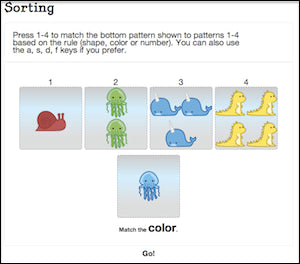Tutorial to Track Mental Improvements with Nootropics
Posted by TEAM PURE NOOTROPICS

Self Tracking Nootropics
Unlike many of the university studies that use rats or the human equivalent, self-tracking is a single-subject design experiment. For our purposes, only a brief explanation of some elements will help. If you’d like to learn more, take a closer look at the Wikipedia article. Baseline assessment – before you start to take nootropics, it is important to get an understanding of your cognitive ability beforehand. Doing so will provide the baseline data point with which you will compare later data. Intervention assessment – while taking the nootropic of your choice, collecting the data will allow you to compare with the baseline for an accurate story.Tools for Online Tracking
Quantified Mind Created in 2012, Quantified Mind provides a wealth of resources to measure cognitive performance for experimentation purposes. There are many existing experiments so you can search the nootropic (ex: “piracetam”) in order to find a relevant protocol to follow. If you can't find a protocol that you like, create one for yourself. Focus specifically on memory and learning in order to test the efficacy of a racetam/nootropic. Once you join this experiment, go through and answer all of the questions. You will find relevant protocol experiments to follow, but you may also choose to perform some of your own.

After you finish a test on Quantified Mind, you can “save this result” so that you can access it with all data at a later date. As with any other tool, make sure you are getting a baseline of your memory recall before you start taking any nootropics.
 Cambridge Brain Sciences Another great online tool is the Cambridge Brain Sciences program, which tests 4 cognitive areas. These include memory, reasoning, concentration, and planning. For our purposes, the best tests to track racetam improvements are under the “memory” category. Paired Associates – This game requires users to remember which objects are hidden in respective boxes. Activation of the lateral and medial frontoparietal and occipital regions of the brain. Digit Span – This test exercises verbal working memory, which is involved in the memory of telephone numbers, names etc. Monkey Ladder – The monkey ladder test involves visual working memory. Users are expected to remember the placement of numbers. Studies show that chimps have better visual working memory than humans; maybe nootropics can help! Spatial Span – This test involves visuospatial working memory. Environmental judgement (such as cars driving near you) requires this type of memory. You will need to remember squares in this simple test. If you are taking other nootropics, it is important to seek the desired effect in order to properly test the cognitive improvements. Even with racetams, you may want to take tests in other categories (such as reasoning or concentration) to see whether there are advantages for you in those areas. It is less time effective, but with more data about yourself, you can make a more informed decision. Other cognitive tools: There are a wide variety of free cognitive tools aside from Quantified Mind and Cambridge Brain Sciences. These include CogniFit, Cognitive Fun, Dual-N-Back, and Gbrainy.
Cambridge Brain Sciences Another great online tool is the Cambridge Brain Sciences program, which tests 4 cognitive areas. These include memory, reasoning, concentration, and planning. For our purposes, the best tests to track racetam improvements are under the “memory” category. Paired Associates – This game requires users to remember which objects are hidden in respective boxes. Activation of the lateral and medial frontoparietal and occipital regions of the brain. Digit Span – This test exercises verbal working memory, which is involved in the memory of telephone numbers, names etc. Monkey Ladder – The monkey ladder test involves visual working memory. Users are expected to remember the placement of numbers. Studies show that chimps have better visual working memory than humans; maybe nootropics can help! Spatial Span – This test involves visuospatial working memory. Environmental judgement (such as cars driving near you) requires this type of memory. You will need to remember squares in this simple test. If you are taking other nootropics, it is important to seek the desired effect in order to properly test the cognitive improvements. Even with racetams, you may want to take tests in other categories (such as reasoning or concentration) to see whether there are advantages for you in those areas. It is less time effective, but with more data about yourself, you can make a more informed decision. Other cognitive tools: There are a wide variety of free cognitive tools aside from Quantified Mind and Cambridge Brain Sciences. These include CogniFit, Cognitive Fun, Dual-N-Back, and Gbrainy.
Testing Feelings with Nootropics
Cognitive improvements are not the only thing to track while using nootropics. How you feel is also important for your ability to function efficiently in a sustainable manner. One of the best apps to use is the Mercury App, which is a free online tracker of your feelings. Create a new account and create a new tracking and title it something relevant for you (ex: piracetam test #1) and determine your scale, description etc.

After a certain interval, you can record how you are feeling and then plot it together. The program allows you to even get email reminders to record your feelings. Enter relevant recording times like 30 minutes before and after taking the nootropics and then maybe an hour or two afterwards. Due to the relatively short half-life for racetams, you can check every couple of hours if you have the time. If you hide the results for a while using the provided feature, you can ensure the best data for the nootropic testing.

Data collection of your feelings might not be the most scientific, but combined with cognitive function tests can be extremely useful to paint the complete picture. Of course, all of this is based on your own motivation to test whether nootropics are helping you improve or not.

